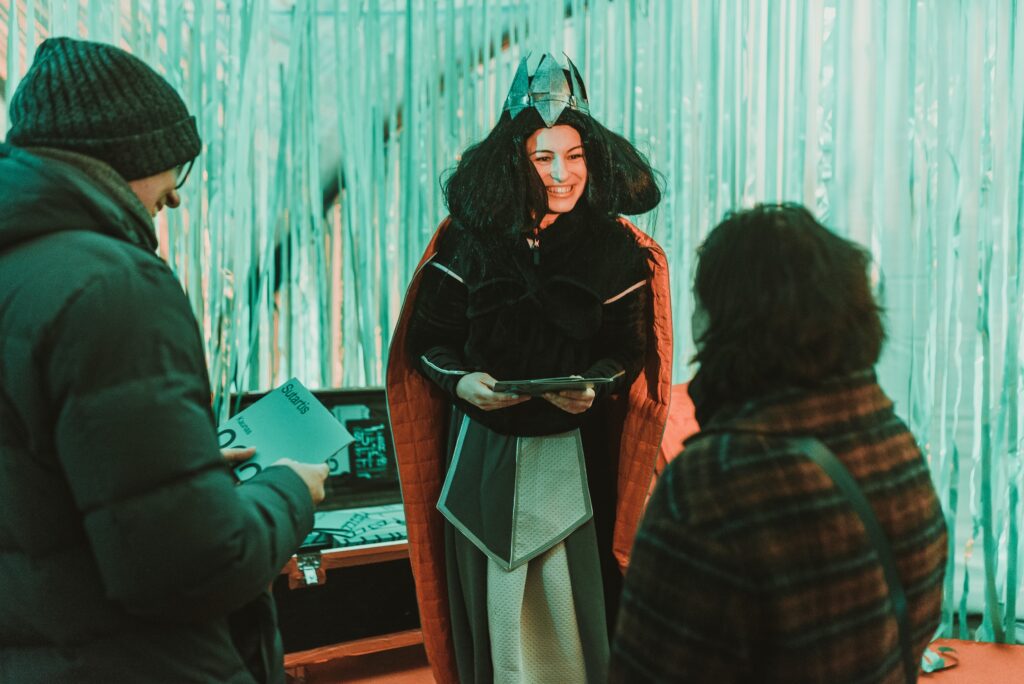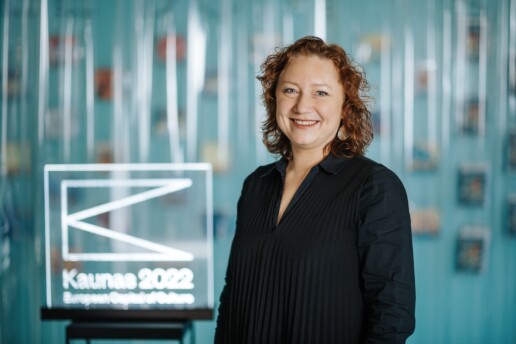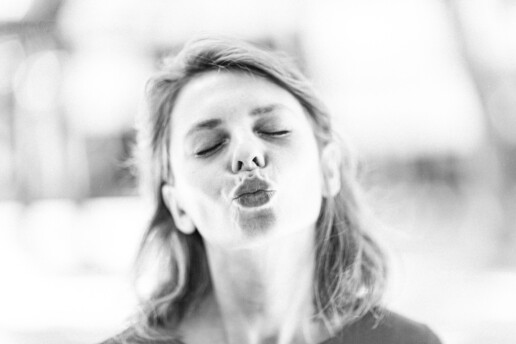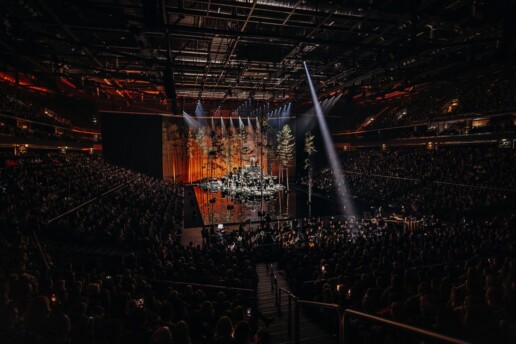“We Have All Been Running on a Higher Gear,” Says Virginija Vitkienė, Head of Kaunas 2022
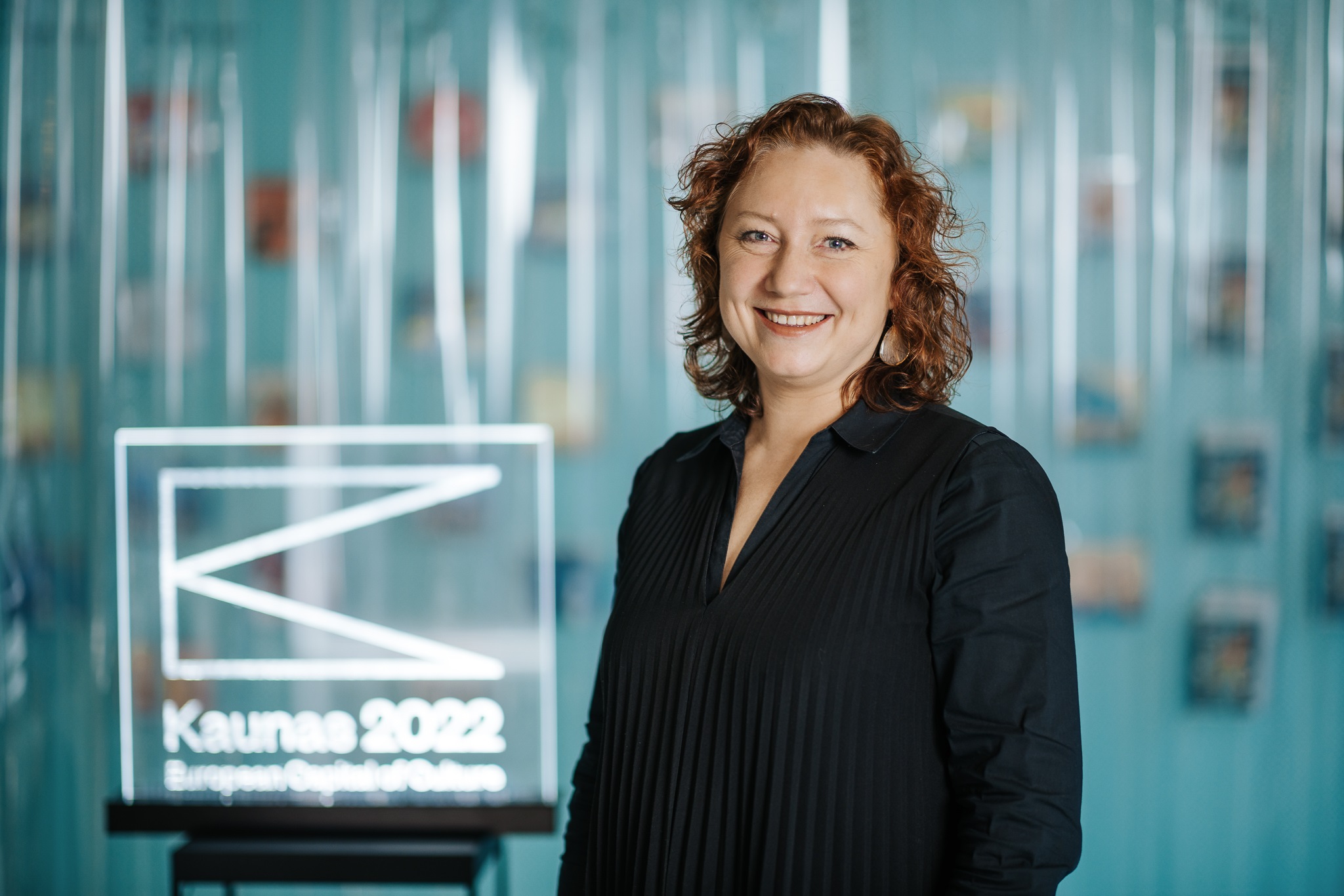
“We wanted to see what we could do when had all the right conditions to thrive. When you have a dream, you can achieve a great deal,” Virginija Vitkienė, leader of the European Capital of Culture programme in Kaunas, says. As 2022 draws to a close, she tells us that she has experienced the celebration and covered a decade’s worth of distance.
More than 3,000 events have taken place and over 2 million spectators and visitors have attended, over the project’s entire lifetime. With visits to museums and galleries having increased by a third, the number of foreign tourists having reached pre-pandemic levels, exclusive attention having been captured from foreign TV stations, not to mention all the world-class exhibitions that have taken place, the standard of cultural life in Kaunas, according to Vitkienė, has now reached levels seen in New York or Berlin.
She believes that over the years, Kaunesians have become more curious and their demand for quality cultural and art events has grown. We no longer perceive ourselves to be living in a province.
In the interview which follows, you can find out more about what will remain once the title-holding year is over, the gift that the Kaunas 2022 team delivered to the city, and what it managed to achieve in the round.
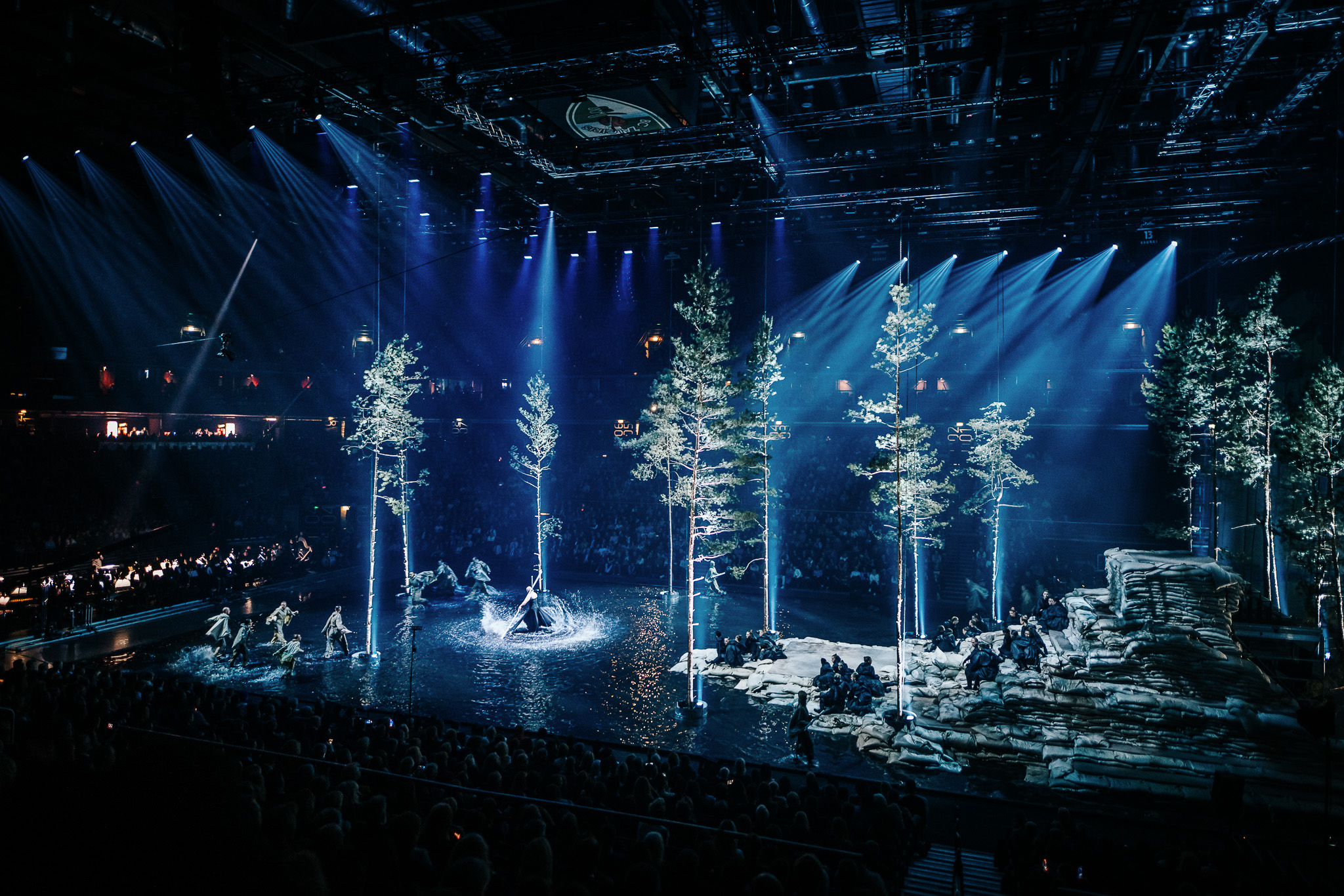
The European Capital of Culture programme is officially closed, and 2022 is coming to an end. How do you feel?
I feel a void within my sense of completeness. We have received so much feedback – people from the outside have been telling us that we have done a colossal job, and that the process of change is gaining momentum. However, the time has come to say goodbye to our team members. We wish one another to continue what we have started, and we cry on one another’s shoulders. This is probably how parents feel when they usher their children into the adult world.
What makes you proudest and happiest?
One of our goals was to stimulate the development of local cultural institutions. I can see this change very clearly – most of Kaunas’s cultural institutions have experienced a huge breakthrough in terms of internationalism. I believe that none of them will want to go back to the way things were.
For example, the National Kaunas Drama Theatre, which previously had no co-productions (productions created by several collaborating institutions), produced five international productions in a year. These included Dorian, with the D’haus Theatre in Düsseldorf, Germany; Visage, with the Esch City Theatre in Luxembourg; The Tower of Babel, which was staged by a creative team comprising members from five countries; and others. These performances have been presented on several European stages.
Although cultural professionals and staff may feel very tired, the feeling is very different now than it was a few years ago. Of course, it will still take time for all the excitement and experiences to sink in.
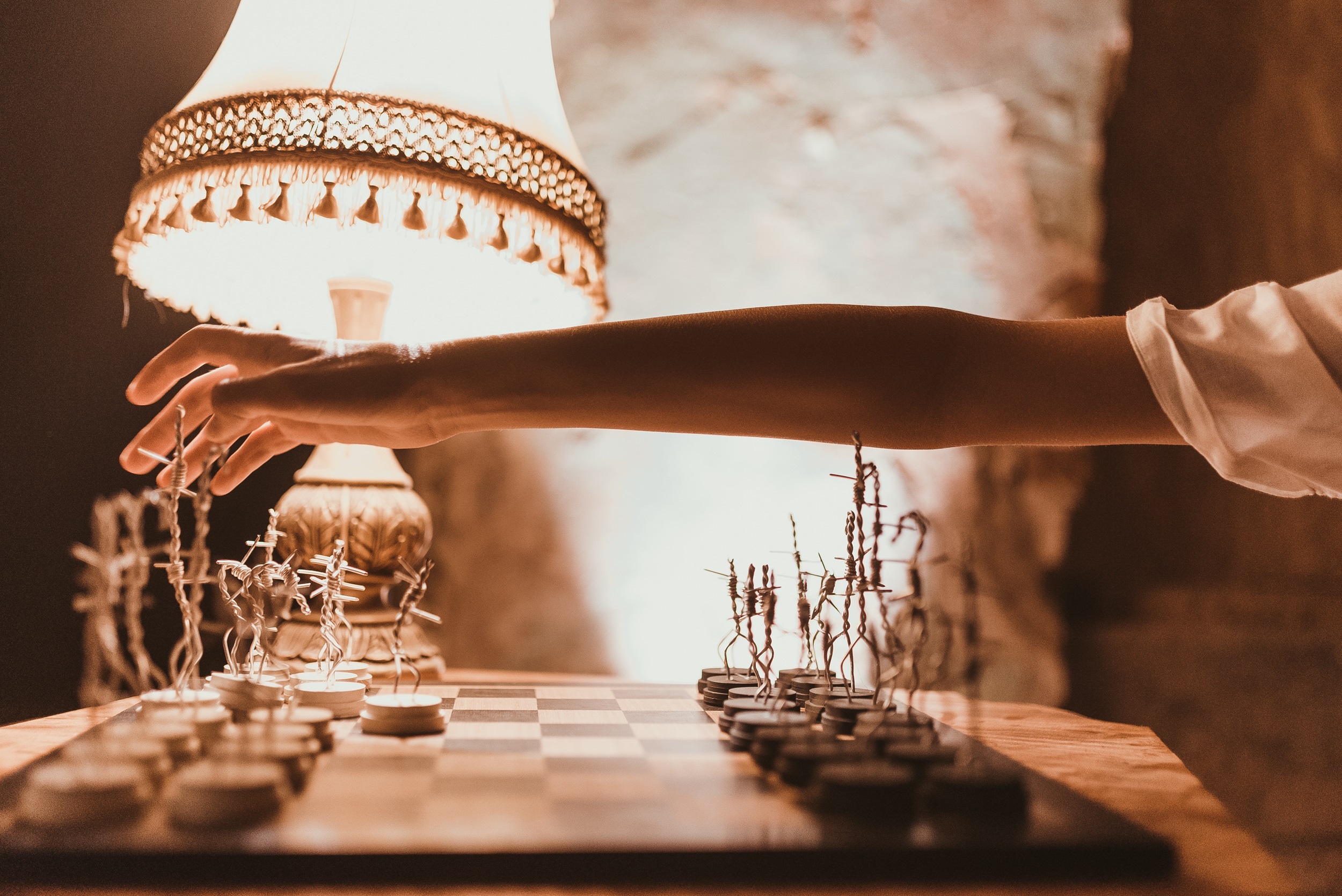
You probably know the programme better than anyone else. However, planning and experiencing it are not the same thing. Has there been anything that surprised you?
I was most struck by Jenny Kagan’s exhibition Out of Darkness. I knew that Jenny was working on that exhibition in a very sincere, personal way, and I had seen the catalogue of the smaller version of the exhibition and some of the photographs when it was held in England. I have been familiar with Jenny’s family history since 2017, when she started participating in the Kaunas Biennale. We all knew that Jenny’s parents had escaped the Kaunas ghetto, were hidden and provided with shelter by Lithuanians, fed for 9 months, kept secret and survived. But it was only just before the opening of Out of Darkness this year that Jenny told us that her grandfather had been among the victims of the massacre at the Lietūkis Garage.
Our Memory Office programme is designed to revive memory, to encourage truth and genuine conversations about what happened in Kaunas in 1941, especially on 26 June, when Lithuanians brutally massacred Jews. After all, when the tragedy of the Lietūkis Garage took place, there weren’t even any Nazis in Kaunas! Yet, for five whole years the artist had not disclosed this detail of her family’s history to us. Perhaps she wanted to spare us the accusation, the reproach.
Visiting Out of Darkness has been a harrowing experience for me as well. This exhibition-installation contained so many layers of meaning – it made me think not only about the tragic fate of the Jews during the Second World War, but also about the war in Ukraine today, about the choices people make in such situations and about hope where there seems to be none.
For Jenny, a light artist by training, this exhibition marked a huge leap in her career. With this work, she joins the elite ranks of the world’s artists. In my opinion, it was the best we have ever had in Kaunas. And even though the exhibition is now dismantled, it remains here – we are looking for a permanent location for this exhibition. It’s true that the process will take time, because this exhibition demands large spaces, which are in short supply.
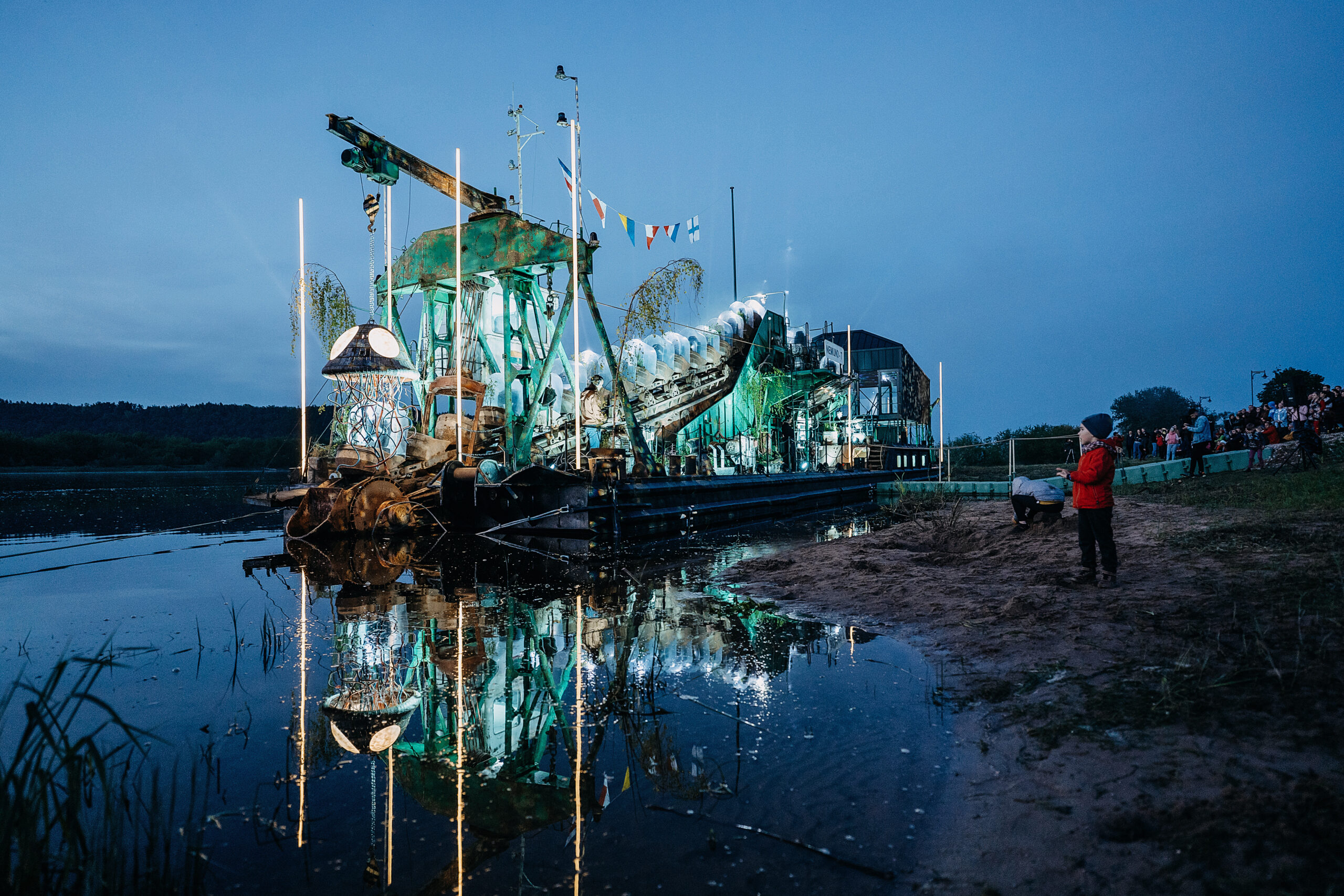
While it is too early to determine the long-term impact of the European Capital of Culture title-holding year, some figures have already been published. For example, 26 million euros have been spent on the programme over five years. Is that a lot or a little?
I think it is a lot for Lithuania and I am very grateful to all the sponsors. On the other hand, it is the same amount that Vilnius had in 2009, and if we consider the inflation over the past thirteen years, it would be fair to say that we have had less than Vilnius. And less than a half of what Esch, also this year’s European Capital of Culture, has had. For this city in Luxembourg of a mere 30,000 inhabitants, the programme’s budget alone was 67 million euros.
By the way, I visited Esch this autumn. Although I was impressed by the in-depth, inclusive programme, it is a pity that it did not attract much public attention. World-class exhibitions received small numbers of visitors. This only confirmed to me how right our strategy was to involve communities in the run-up to the event. Our museum and gallery staff say that this year, compared to previous years, we had three or four times as many visitors. Admittedly, our city, with its 300,000 inhabitants, is much bigger.
Compared to other European Capitals of Culture, 26 million is an average amount – neither too high nor too low. However, in terms of numbers, we have made this money go a long way – over 3,000 events have taken place, and if you count all the preparatory activities and various workshops, this number comes to over 7,000.
On the other hand, if we divide the 26 million euros by the over two million people who have visited the events of Kaunas 2022 over the last few years, the average amount spent per visitor comes to 13 euros. We’ve had quite a bounty of culture, for that amount, don’t you think? Based on these figures, we are making a proposal to municipalities, to governments: to fund culture by at least 2.5 euros per capita per year. With strategic thinking, with good planning, with that amount of money, a lot can be achieved.
I would also add that the only reason we were able to spend the money so wisely was because we knew very well in advance how much we would have each year. When the municipalities and the government approved their grant amounts, back in 2016–2017, we already had a budget plan running up to 2022. It changed very little. By 2022, we had spent almost half of the planned budget.
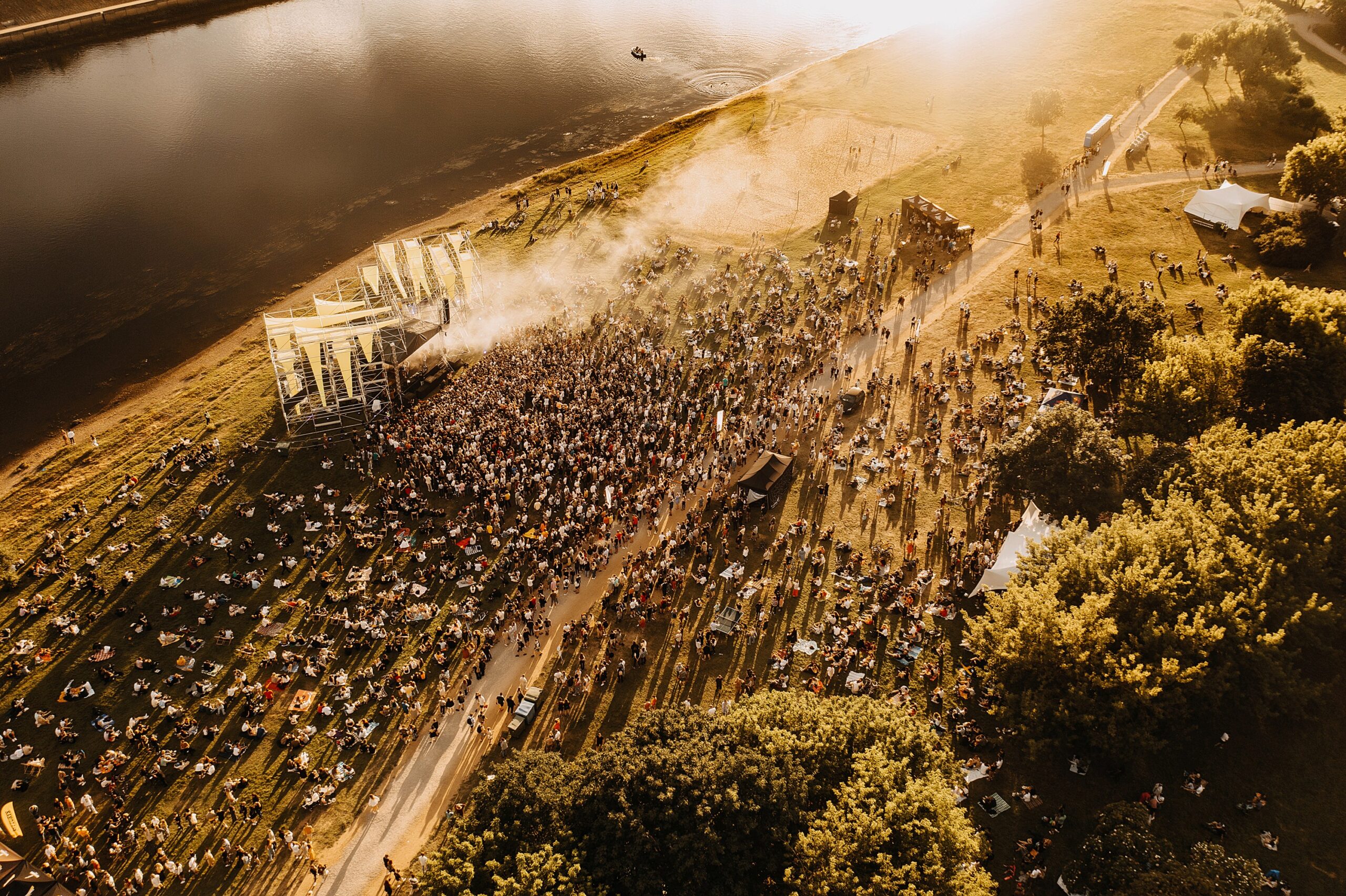
That leaves around 14 million for 2022. The figures seem huge.
Considering that our strategic plan was implemented by 72 partners who proposed more than 170 projects, each consisting of a dozen events... In the end, the figures for each project have remained very small, similar to the cost of a concert or any other event in a regular year.
Still, the three major events of the Contemporary City Trilogy were truly extraordinary. You have mentioned in the past that they accounted for the lion’s share of the 2022 budget. Was it worth it?
I would say that these were very successful events – we created and delivered major celebrations for the city. The city really needs such massive events, engaging hundreds of thousands of people. The opening was not without its challenges, given the pandemic management requirements, as we all had to freeze outdoors in the cold weather, but people’s spirits were not dampened, and the celebration continued in the city for the rest of the night. I saw so many smiling faces – after the long period of social distancing people were longing for interaction. “The Confluence” event, which replaced the “Kaunas Days” festival, brought out a completely new quality and raised the bar – the city has never before witnessed a concert on such a scale taking place upon the flowing waters of the city’s rivers. And the balletoratorio “The Contract”, I think, exceeded everyone’s expectations, including those of our team. It was a spectacular piece by the greatest Lithuanian artists.

I am really glad that we brought the idea of a city trilogy, conceived by Rytis Zemkauskas, to life (after all, we could have just had three separate events). We hoped that the events’ ritualistic and recurrent nature would allow the residents to feel a certain sense of being at one with their city. If you participate in a shared happening with others, you feel as if you have been ordained. Those who have attended even a single one of the big events, I believe, feel as though they have travelled along a certain path. As though they have signed a contract with their city.
And the two million visitors – has this figure matched your expectations?
It’s hard to tell. We had no numerical target covering these several years. It was difficult to forecast the number of foreign tourists. And although we haven’t counted them fully yet, based on the pillow tax paid in the last 10 months, tourist numbers in Kaunas have caught up with those of 2019. These are pre-pandemic figures, which is the tourism sector’s ambition in every country. On the other hand, in our commitments to sponsors, we had set a target of one million people for this year. We exceeded this target by reaching 1.2 million. Besides, we had a large number of returning viewers – I have personally visited William Kentridge’s exhibition more than 20 times, and I’m sure I’m not the only such person. By December, this exhibition had been viewed by 37,000 visitors.

Audra, M. Plepio nuotr.Last year, you suggested that such names as Marina Abramović, Yoko Ono and William Kentridge would inevitably put Kaunas on the European cultural map. Maybe we are already on it? Or is it too early to tell?
A great way to measure how widely we have been noticed is through foreign media coverage. The programme was of particular interest to German journalists and TV crews; Kaunas was also filmed by Italian TV. As many as three half-hour programmes have been shown on prime-time television, focused not on our castles, best restaurants, traditions or other aspects relevant to tourists, but on the European Capital of Culture programme specifically. This is something unique.
Kaunas’s architecture was discussed through our programme’s conceptual lens, admiring not only our inclusion of architecture in the European Capital of Culture programme in general, but also the ingenious way we have utilised the narrative of inter-war modernism, encompassing the founders of the Art Deco Museum, the Capital of Culture’s concierges, and the hospitality programme. The new legend of Kaunas, the Memory Office’s programmes, and the way we have involved citizens in telling the city’s history were also introduced to wider audiences. We welcomed journalists from Latvia and Poland. Some of them visited Kaunas several times.
Foreign TV stations presented the AUDRA Contemporary City Festival, the central event of the youth programme, as something miraculous, as well as covering the CulturEUkraine Centre, and the William Kentridge exhibition, amongst others. This is a whole new level of international visibility. Kaunas was presented not as a conventional tourist destination, but as a cultural centre. We are very pleased with this. That is what we were aiming for.
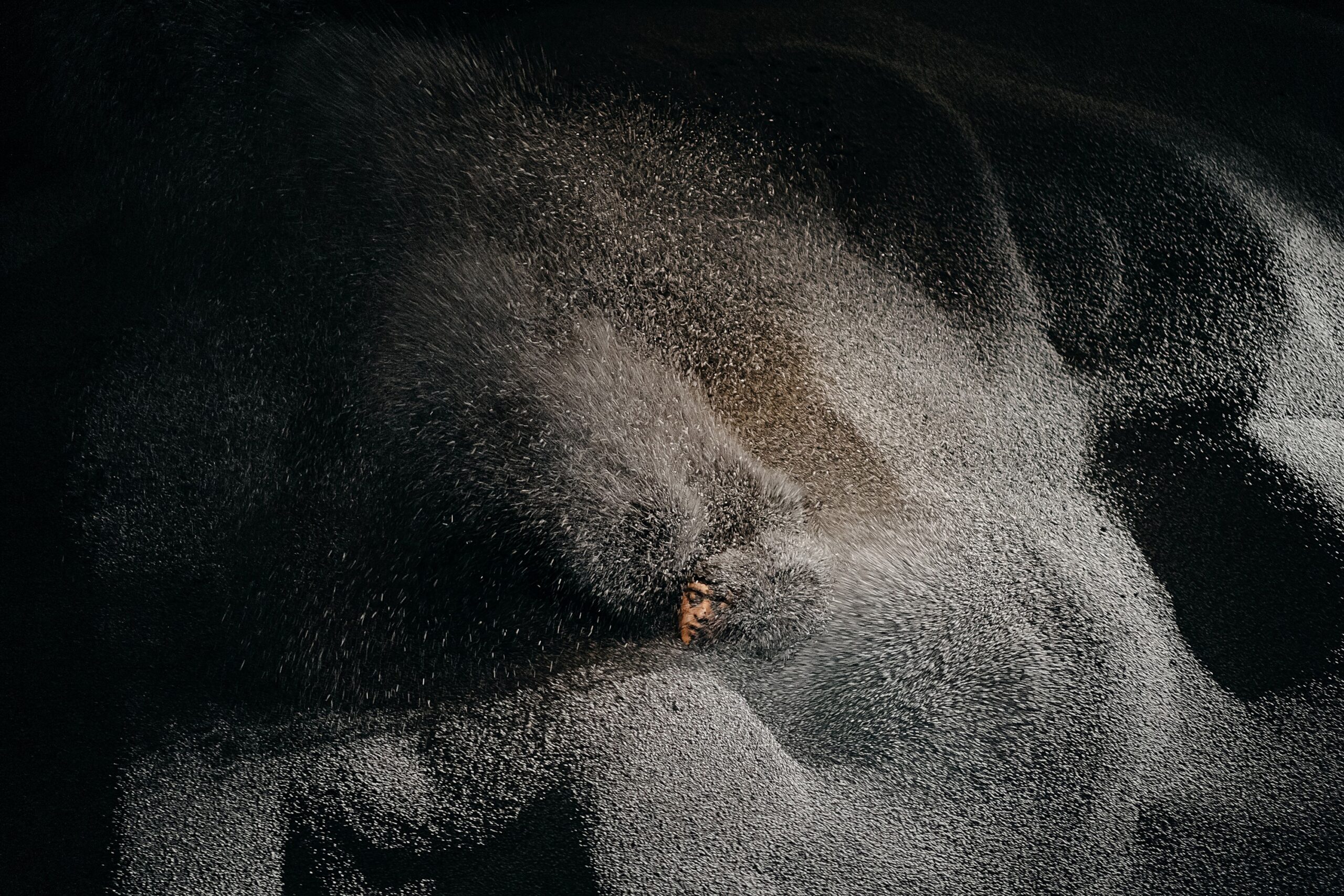
L'absolu, Contempo festivalis, M. Plepio nuotr.At the beginning of the conversation, you mentioned the change happening in cultural institutions. And how have Kaunesians changed? What is their attitude towards the consumption of culture, and towards their city today?
I hope that we are all more proud of where we live. Kaunas can no longer be considered merely a province. Of course, it would be quite sad if in five years’ time we went back to having very little culture. I would expect that we will see the real impact around that time.
But if we could maintain at least a tenth of the capacity of a European Capital of Culture, if we could have culture for at least a million euros a year... We would certainly be able to consume that kind of supply – it was actually impossible to take in everything that was on offer this year. Of course, there will have to be a change of mindset and we will have to pay more for culture. This year we were able to offer many events for free or at a significantly reduced price.
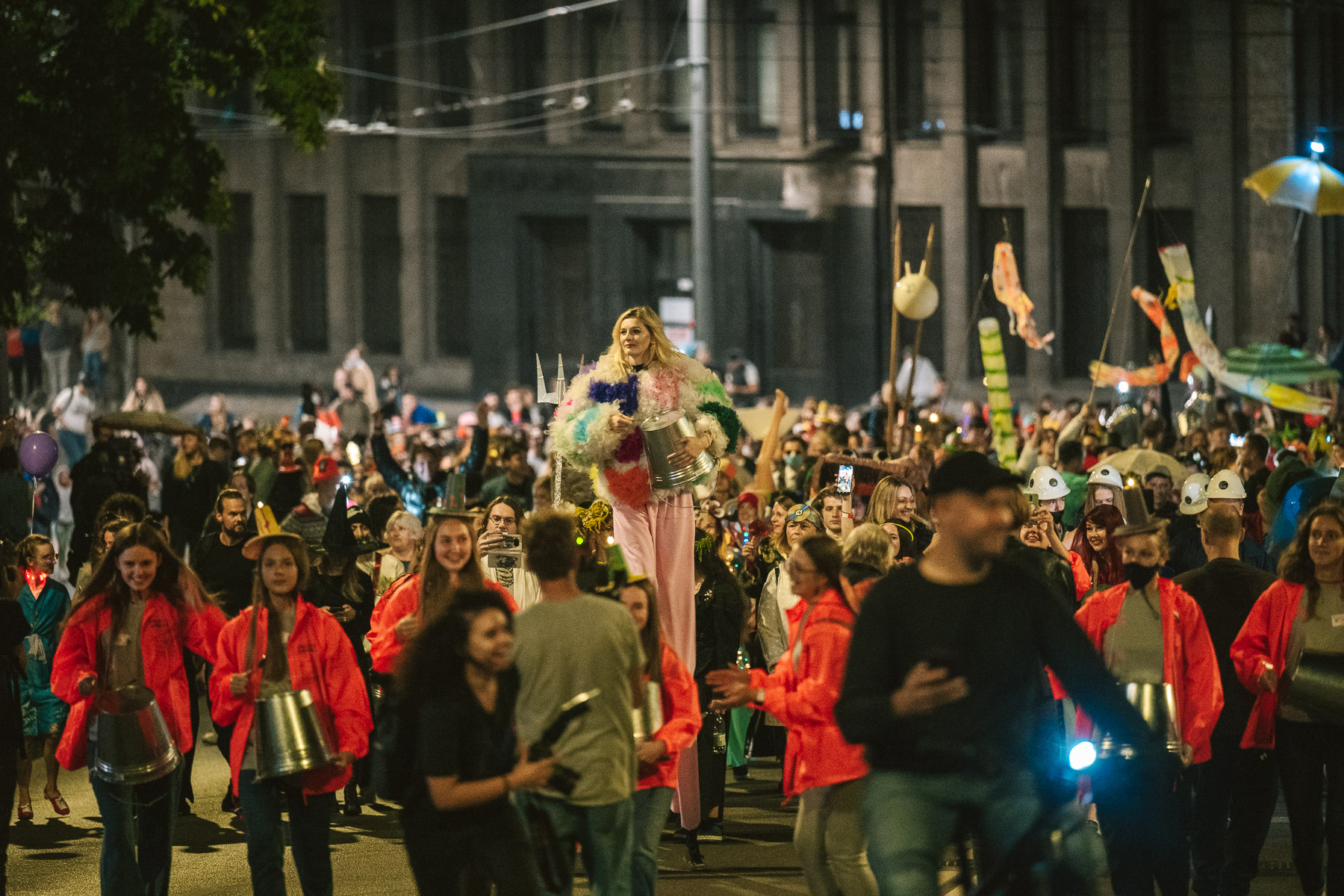
Do you see a change in the authorities’ attitude towards culture funding?
At the moment, we are in the process of planning next year’s budget. Kaunas District Municipality has planned for quite a solid amount of money going towards continuing many of these new initiatives next year. In Kaunas, the budget is still being planned, we are handing in our proposals. Since the city is quite big, a greater number of new initiatives have been launched – not only 12 new festivals, but also other activities – and it would take 600,000 euros more than last year to continue them. We will be able to assess the degree of political will soon enough. It would be great to see an understanding that culture adds vibrancy to the city and improves its reputation.

You also talk about long-term partnerships between cultural institutions. This seems to have been one of the strengths of the team you lead. Kaunas 2022 brought together around 12,000 representatives from the culture and arts sector. That includes artists who are usually considered individualists. How did you manage to achieve this?
People who have been involved in this project have taken it as a personal challenge. We all realised that this was a temporary mission, a project, a stage in life. We were running on a higher gear than we normally do when working in the same cultural institutions. Maybe we wanted to see for ourselves what we can do when we have more resources, for example, a larger budget. We often say that there is not enough money for culture, so we can’t do this or that. Now, we had all the right conditions, we had everything, so we could do what we had always dreamed of. I think that the “Meno Parkas” Gallery and its director Arvydas Žalpys have dreamt about hosting Marina Abramović’s exhibition ever since they were involved as partners in Marina’s 2019 exhibition in Poland. This year in Kaunas, he had the opportunity to host a great retrospective of this world-renowned artist. When you have a dream, you can achieve a great deal.
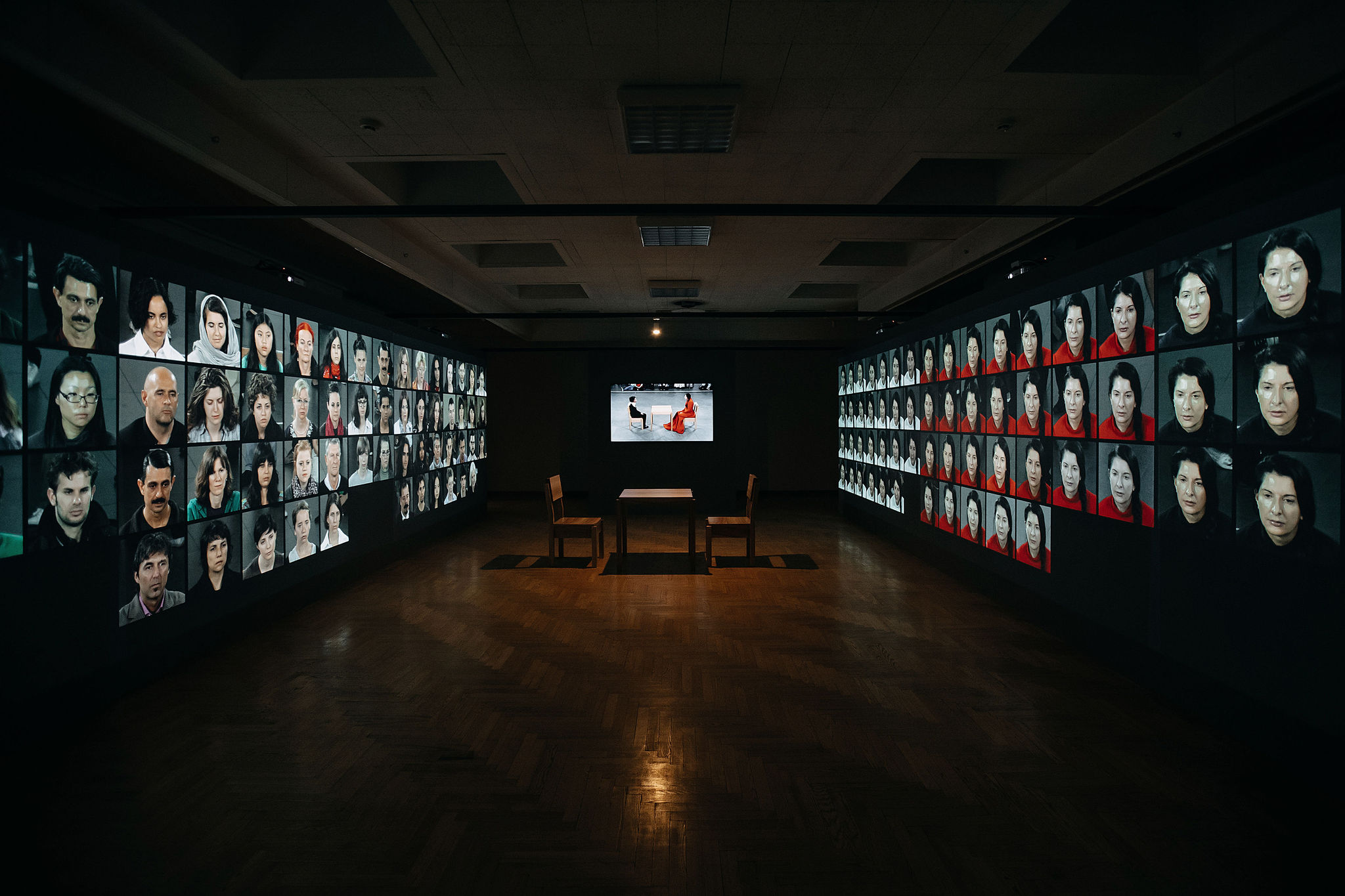
Your answer reminds me of the end of the hero’s journey cycle, discovered by the mythologist Joseph Campbell: once the hero, having faced the enemy, has defeated the enemy and himself, he returns with an elixir. That elixir is important not only for him, but for all the inhabitants of his world. What sort of elixir did the heroes of the Kaunas 2022 journey bring back with them to Kaunas?
In my view, we have all become more interested in our surroundings, both near and far. Today, we want to see not only the façade, but also what’s happening behind the front door. The people of Kaunas have started to appreciate not only modernist buildings themselves, but also their history and what is happening inside them today. We have begun to care more about our neighbours – what they are creating, and how they live. That heightened curiosity, that desire to know and to be engaged in life – could that perhaps be the elixir?

Kaunas bids farewell to the title of Capital of Culture by sending 2022 kisses to Lithuania, Europe and the whole world
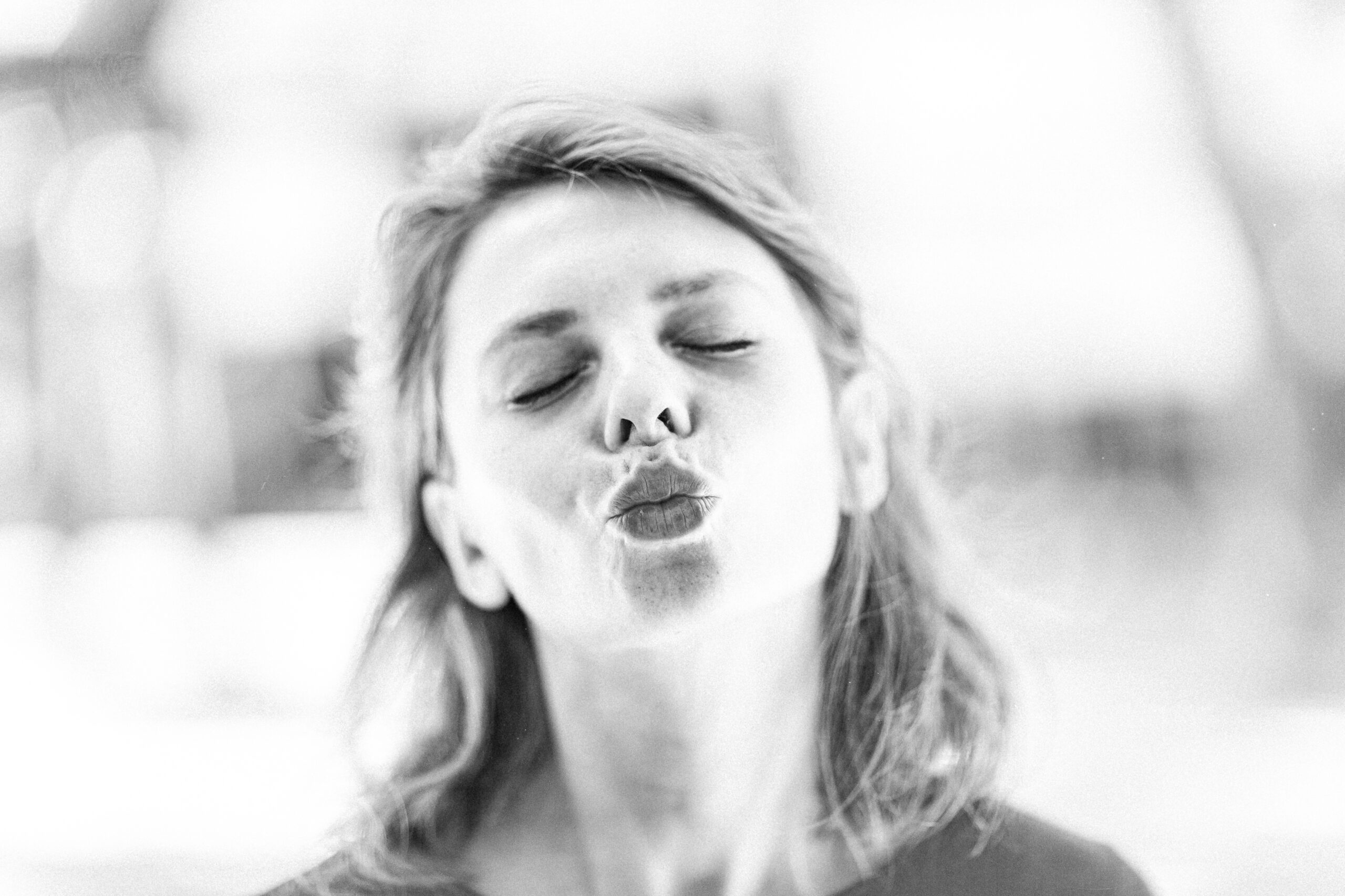
Kaunas bids farewell to the title of Capital of Culture and passes it on to three other European cities. After the project reached the finish line, many Lithuanian and foreign cities were surprised with photos of people sending air kisses. With this project of photographer Remis Ščerbauskas, “Kaunas 2022” team symbolically says goodbye - according to them, 2022 kisses are dedicated to all dreamers and doers, participants and artists who helped to make the dream of the Capital of Culture come true.
Since 2019 the author of the idea, photographer Remis Ščerbauskas sought to capture the participants and visitors of the European Capital of Culture events, community members, artists, Kaunasians and guests of the city, volunteers, the team that contributed to the implementation of the project and those who often stayed behind the spotlight. All these people have raised the city’s culture to a new level.
The result of many photoshoots is 2022 unique kisses, the process of capturing which, according to the photographer, was not the easiest. Reactions of people varied from looking for hidden cameras to persuading others to participate.
“A kiss is a symbol of intimacy, security, trust, a feeling that is difficult to share at any time. So, I admire people's courage to get involved and give others a beautiful emotion. I would like Kaunas to find the strength to let in new ideas and participate in international projects in the future,” said the artist.
The kisses of Kaunasians and friends of Kaunas will reach not only the cities of Lithuania, but also billboards, bus stops and computer screens in Latvia, Estonia, Germany, Italy, Israel, Sweden, Finland, and the United Kingdom.
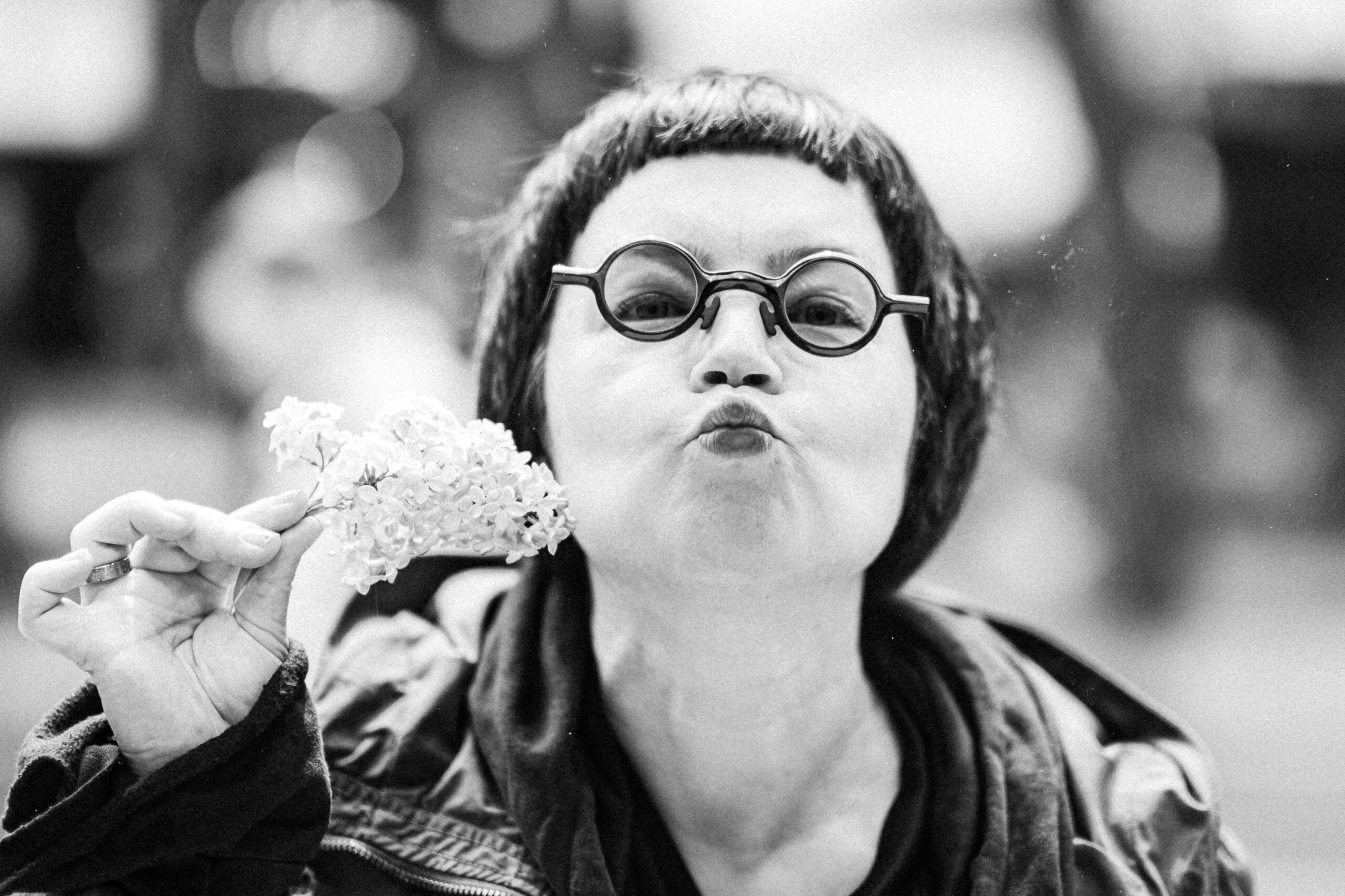
Kisses - for communities, visitors, and artists
Not only passers-by but also artists, community representatives, participants of the events and the “Kaunas 2022” team were captured in R. Ščerbauskas' photoshoots. Curators, authors of the idea behind the project, volunteers and technical staff shared whom they would like to send their gratitude.
According to the CEO of “Kaunas 2022”, Virginija Vitkienė, her kisses would go to the residents of the city and district of Kaunas. “It was these people who accepted the initiatives with open hearts. Some of them may have seemed strange at first - after all, concerts usually take place in halls, and here they were both in the yards and the forests... Well, culture crosses all thresholds. With kisses, I would like to send a wish to everyone: the title of the Capital of Culture is moving elsewhere, but let's not forget what we have created, let's not forget to nurture the commonality that has been cultivated, let it be sustainable, and good things continue to travel from heart to heart.”
The kiss from Rytis Zemkauskas, the creator of the “Kaunas 2022” trilogy, is dedicated to “Kaunas 2022” volunteers: “They will remember the events of the capital for a long time, and the city will remember them forever!”
Ana Kočegarova-Maj, the head of the “Kaunas 2022” programme, conveys her wishes to the other cities of the European Capital of Culture: “This is a wish to Timișoara, Vesprem, Elefsina, fraternal Tartu, Chemnitz and other cities that are preparing for the title year. A Ukrainian city must and will appear among them”, wishes the head of the programme.
Daiva Price, the curator of the Memory Office programme, believes that the value of the European Capital of Culture project is not the events, festivals or even works of art, but the new human connections that have been established during the project. “I am grateful to fate that I am part of this journey and I send my kiss of gratitude to all those I have met on my way.”
The entire collection of kisses could be found here.
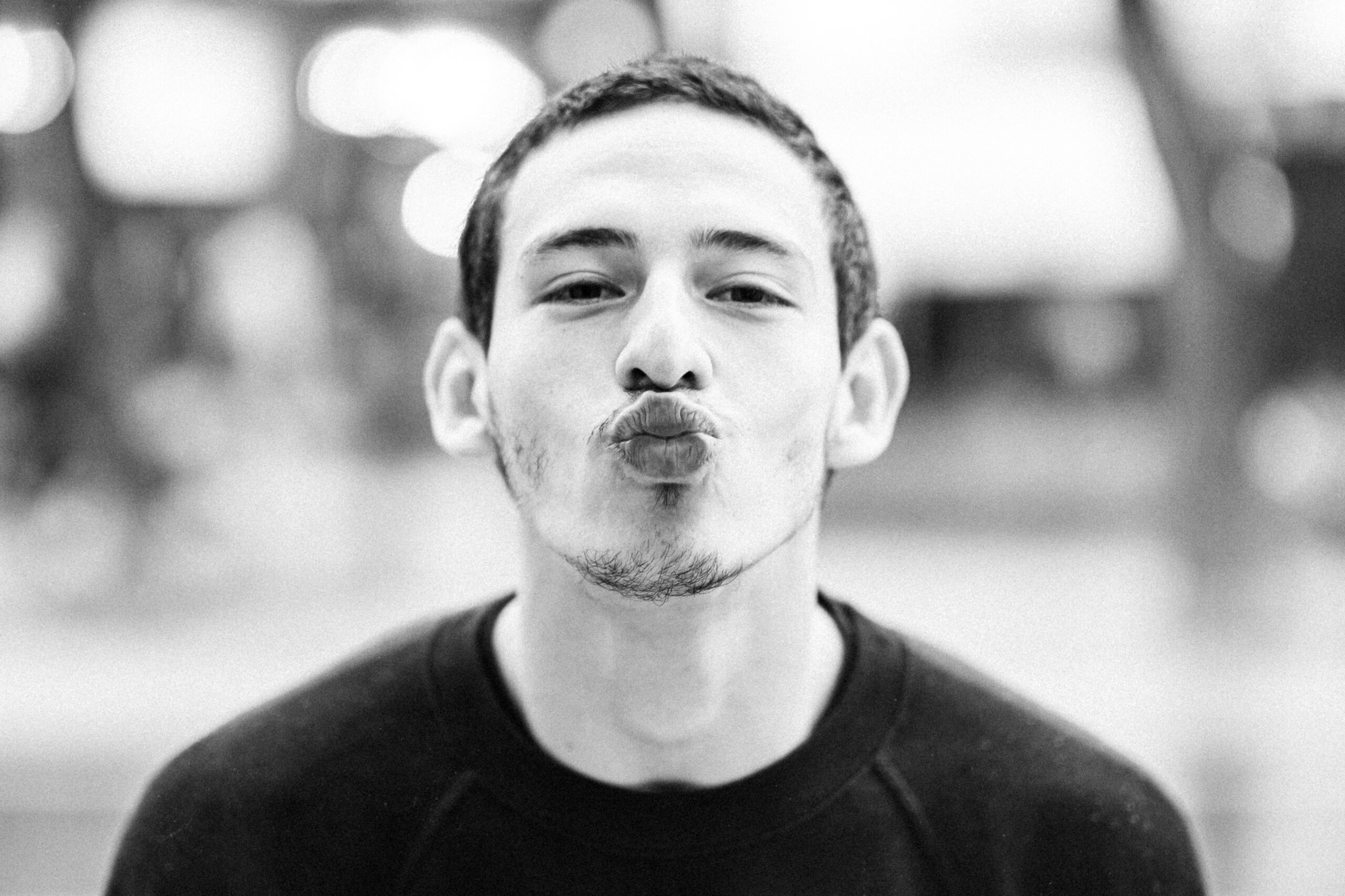
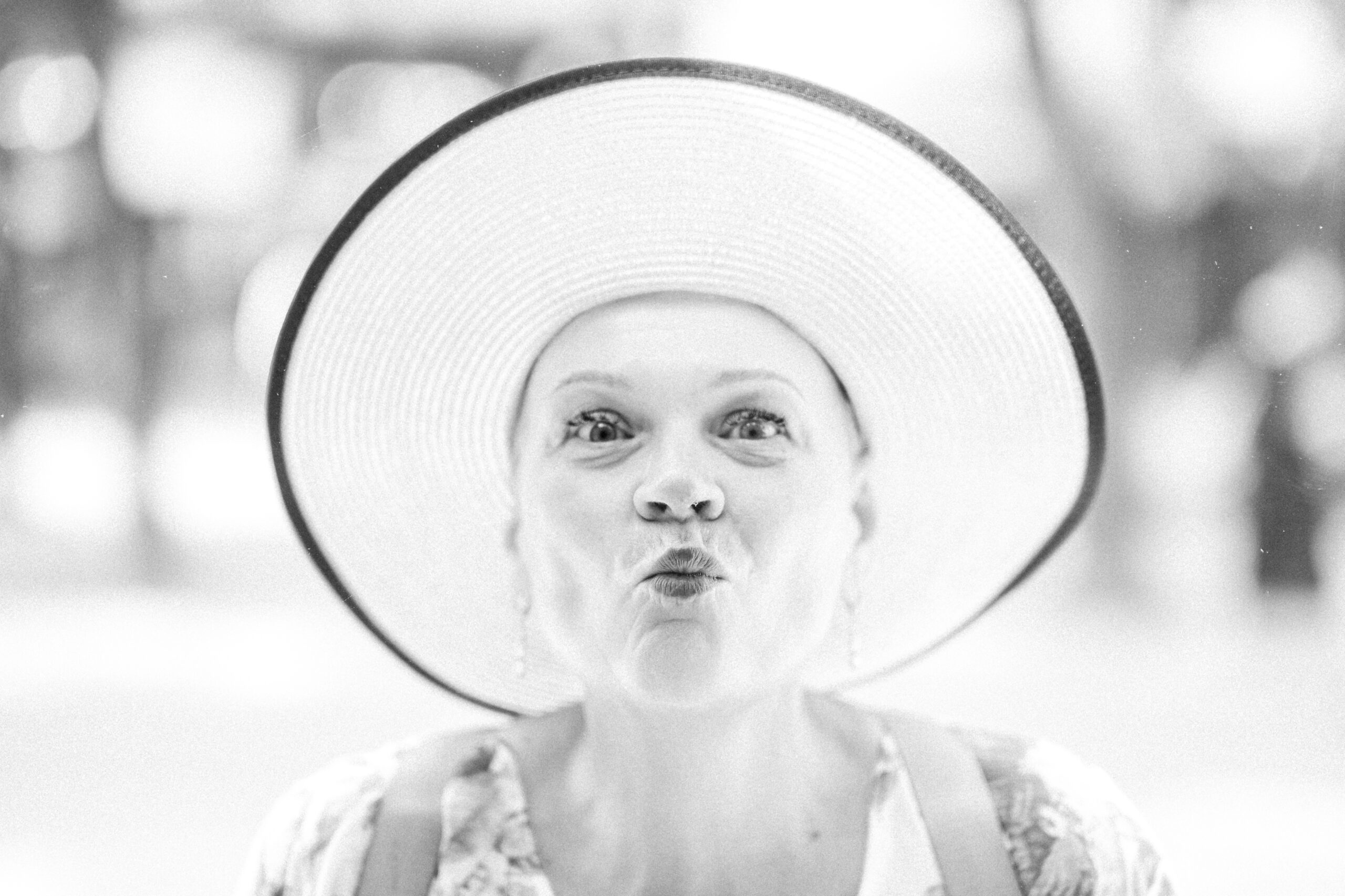

“Kaunas – European Capital of Culture 2022” Programme Concludes: Key Figures and Future Plans Revealed

Having attracted 2.4 million visitors in 5 years, “Kaunas – European Capital of Culture 2022” can be hailed as a success story. A programme which has delivered over 3000 events to guests from all over the world, increased tourism, international media attention, and a huge number of participants – these were some of the major achievements and legacies of the Capital of Culture that were discussed by the Lithuanian Minister of Culture Simonas Kairys, “Kaunas 2022” CEO Virginija Vitkienė, and the Head of Communications and Marketing Mindaugas Reinikis at the last “Kaunas 2022” press conference held on Monday.
The journey of “Kaunas 2022” from a temporary capital to a contemporary one began back in 2015 with the preparation of the application for the European Capital of Culture competition. In March 2017, it was revealed that Kaunas’s proposed programme had convinced the selection panel of independent experts, and the city was awarded the title of European Capital of Culture, the EU’s most important cultural project, for the year 2022.
“I expected it to be sad when the title-holding year came to an end, but today I feel that many great things are only just beginning, and how they move forward will depend entirely upon us,” said the Republic of Lithuania’s Minister of Culture, Simonas Kairys, in his opening remarks. According to Kairys, 2022 has been an extraordinary year that has changed the rules of the game considerably – the pandemic, the war in Ukraine and other challenges have forced the organisers to look at the project differently and to adapt to the current situation.
“I believe the project’s greatest objective was to make everyone realise that we are part of the European cultural scene: that it is important to create opportunities for dialogue and international cooperation, and to be open-minded. [...] This title reminds the rest of the world that we have been a part of Europe for centuries, that even after 50 years of being stuck in a dark and difficult tunnel, today we are back in the European family,” the Minister of Culture said.
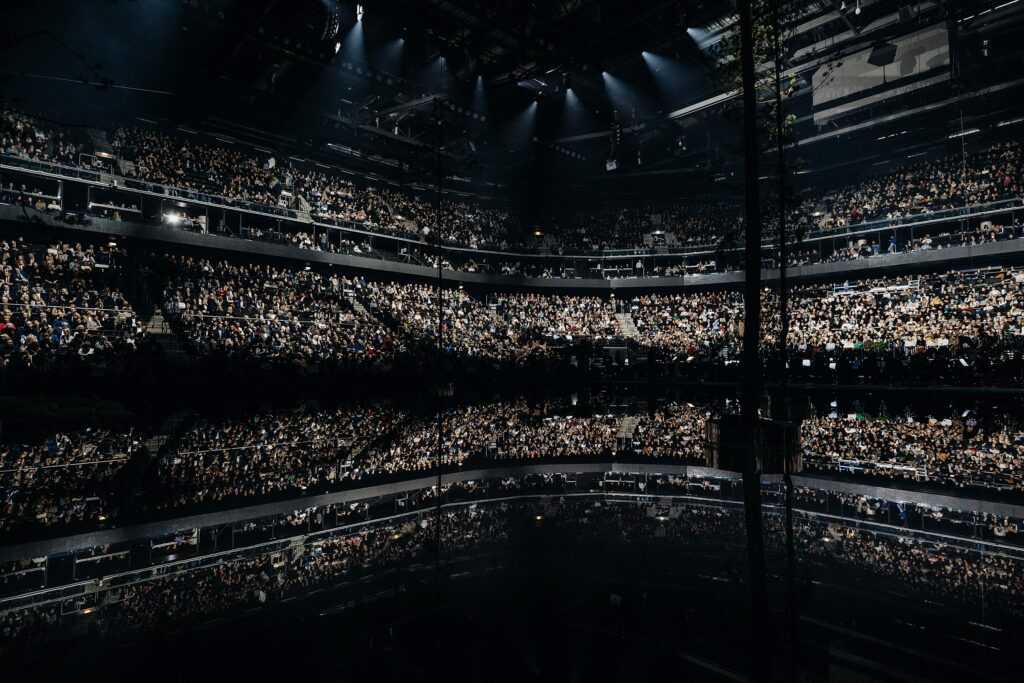
Record Numbers of Visitors and Artists Involved
Over the five years of the project’s implementation, according to Virginija Vitkienė, CEO of Kaunas 2022, 2.4 million culture lovers have attended a variety of events – festivals, concerts, exhibitions, performances, contemporary dance performances and other artistic initiatives. Over half of them visited events in 2022.
19,000 artists and creators from all over the world – Europe, Japan, the USA, South Africa, Israel, and elsewhere – contributed to creating the Capital of Culture in Kaunas and Kaunas District. Yet most of the events, 70 percent, were created and implemented by Lithuanian artists. In 2022 alone, Lithuanian and international artists organised 1,600 cultural initiatives open to the public in Kaunas and Kaunas District.
A total of 26 million euros has been earmarked for European Capital of Culture projects, or 13 euros per person over five years. More than 50 donors and partners contributed to the cultural initiatives, with a total value of 2.8 million euros in financial support and services.
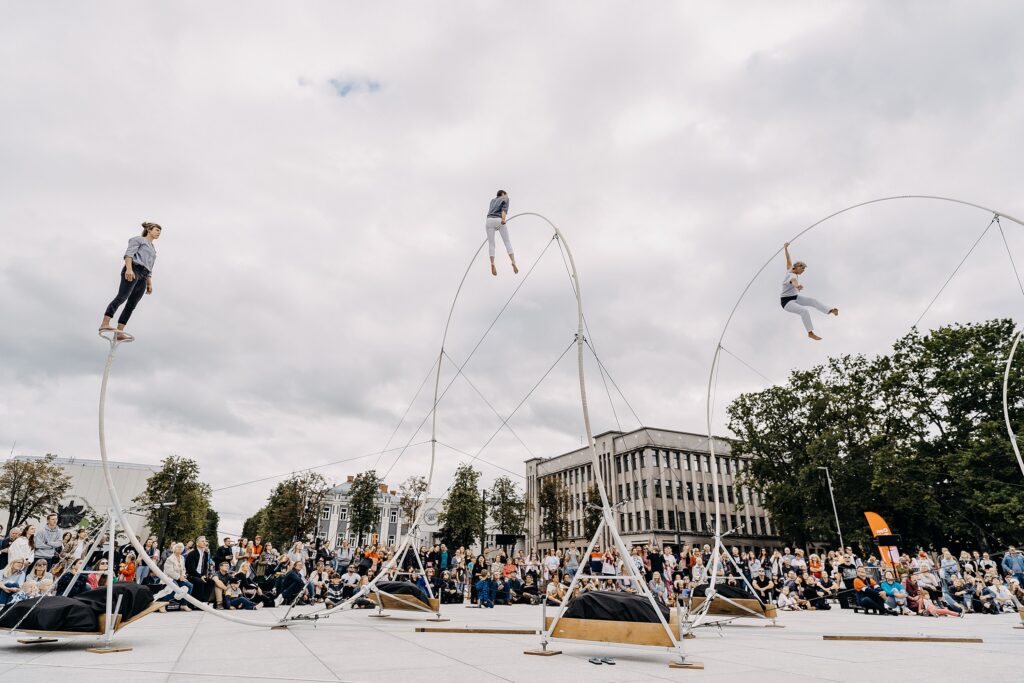
From the BBC and The Guardian to National Geographic
The head of the initiative, Virginija Vitkienė, emphasised that the Kaunas 2022 project gained visibility not only in Lithuania, but also worldwide – in 66 countries in total in Europe and beyond, including the US, India, the United Arab Emirates, Canada, South Africa, South Korea, and Singapore. Over 170 foreign journalists visited the city.
National Geographic, a popular science magazine boasting 6 million readers, noted that Kaunas is “finally getting the plaudits it deserves.” The Telegraph reported that “in Kaunas, the Twenties are roaring once more,” while The Guardian listed the Capital of Culture among the 10 best European city breaks with a difference.
Kaunas has also been covered by the BBC, CNN, The Times, Rai, Deitsche Welle, Financial times, Euronews, and other news sites. It is estimated that news about Kaunas 2022 has reached more than 3 billion people worldwide. Foreign media representatives were attracted not only by the ongoing events, but also by street art, the themes related to memory, Kaunas modernist architecture, and the appearances made by world-renowned artists.
According to Mindaugas Reinikis, Head of Communications and Marketing, “Kaunas has now appeared on maps where it has never featured before, but this will probably take a few decades, or even centuries, to be fully grasped and appreciated.”
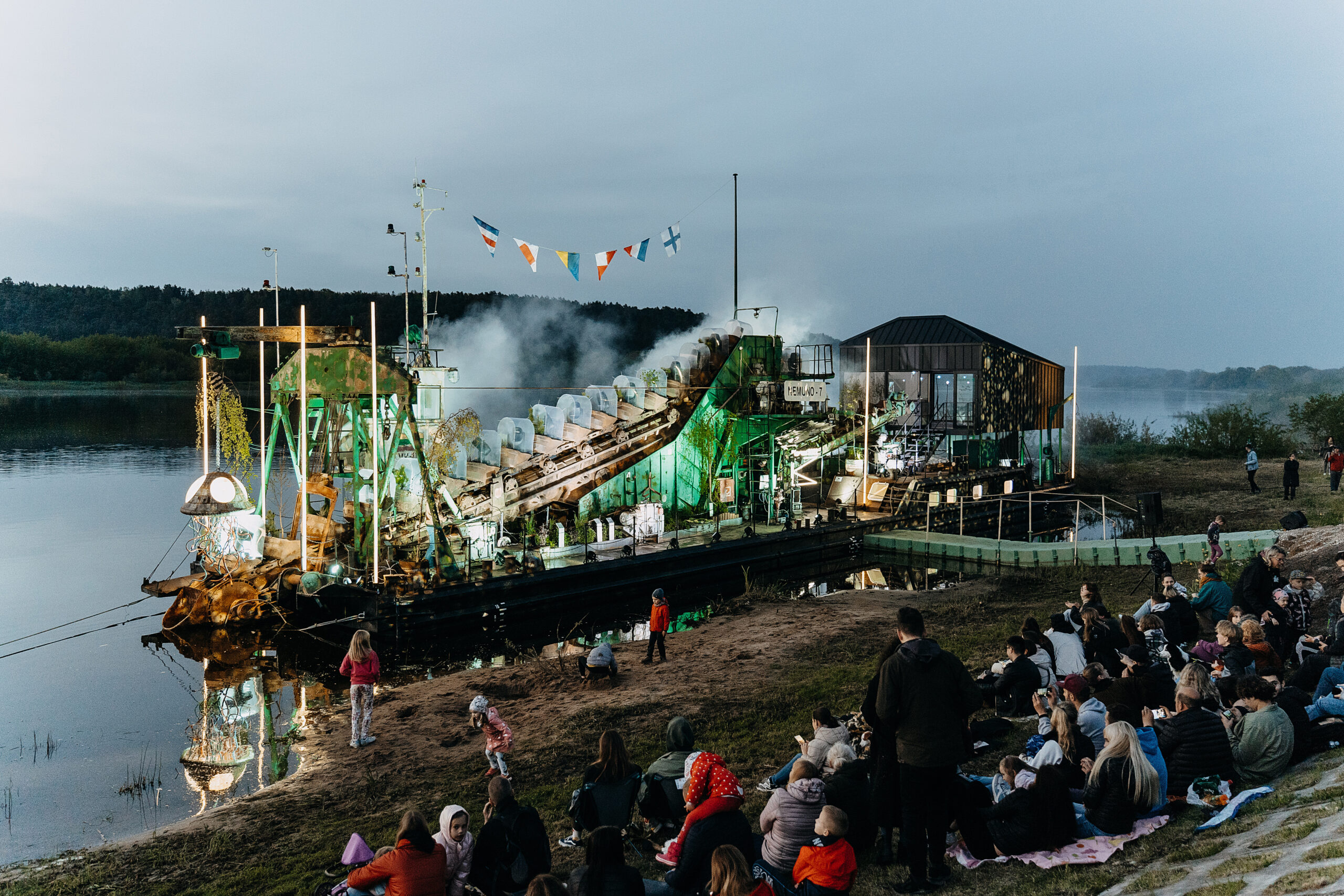
Tourism Boost
International press attention and high-profile artistic events and exhibitions have led to an increase in tourist visits. In 2022, Kaunas accommodated stays from over 309,000 tourists, the majority of whom were from Germany, Italy and neighbouring countries – Poland, Latvia and Estonia. It was pleasing to see that increasingly more people were choosing Kaunas for more than a single-day trip, spending a whole weekend or a few days in the city.
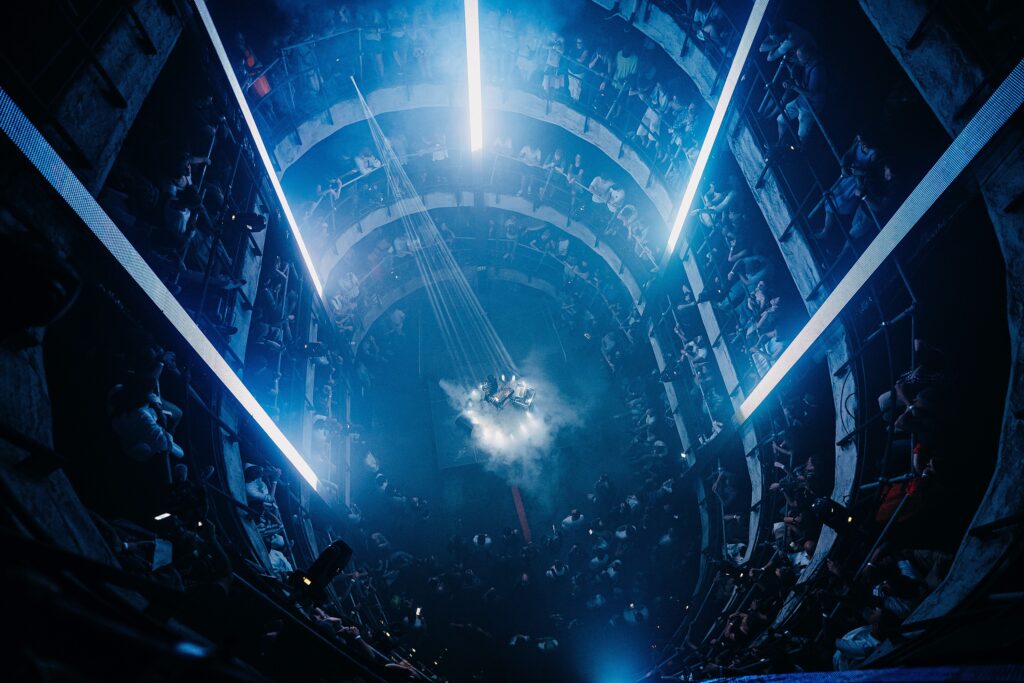
From New Cultural Spaces to Festivals Turned into Traditions
A number of popular festivals and events have become an integral part of the city and its surrounding district. The International Day of Happiness, Kaunas Literature Week, and the Fluxus Festival, which has now become a tradition, will continue to attract visitors and residents of the city. Culture to the Courtyards, Citytelling Festival and the international performing arts festival ConTempo will keep on bringing music and performances to Kaunas’s neighbourhoods. Design enthusiasts will remain warmly-welcomed participants at the MAGENTA Landscape Design Festival. The European Capital of Culture Forum and the much-loved Contemporary City Festival AUDRA will also carry on. And in Kaunas District, the community project “Contemporary Neighbourhoods” will continue to take place.
The CulturEukraine co-working space, launched in 2022, will continue to run its activities in the city, as well as the Kaunas Central Post Office, which has now been transformed into an exhibition venue and event space. The Kaunas Airport, which was renamed as the Kaunas Fluxus Airport, and the sculpture of the Mythical Beast of Kaunas, beloved by children, will serve as reminders of this historic year. Over 1,000 artworks, sculptures and publications created in recent years are going to be exhibited in various art institutions across Kaunas and Kaunas District.
A Path of Emerald, the route touring public art objects, featuring 50 works by Lithuanian and international artists, will remain in operation in Kaunas District, as well as the dredger-boat “Nemuno 7,” located in Zapyškis, now turned into a space of art and culture.
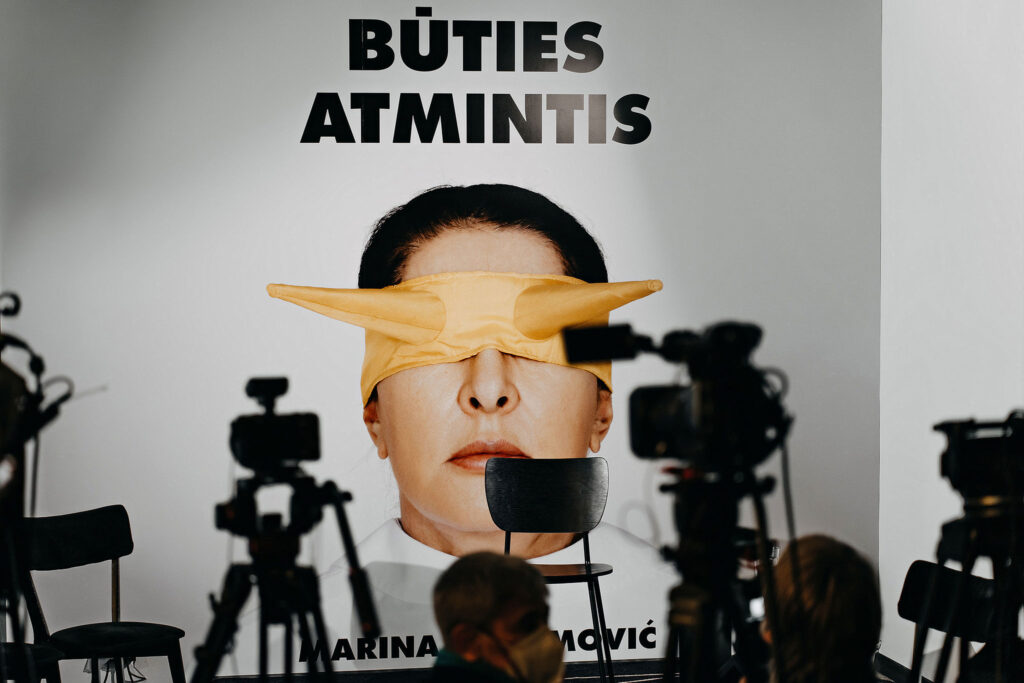
The Capital of Culture Bids Farewell with 2022 Kisses
The most important component of “Kaunas – European Capital of Culture 2022,” as Virginija Vitkienė, the Head of “Kaunas 2022,” points out, is the people who have contributed to this project: artists, representatives of the cultural scene, communities, volunteers, and partners, transforming Kaunas into one big European stage.
As Kaunas passes on the title of Capital of Culture to three other European cities, it bids a symbolic farewell by sending 2022 kisses to Lithuania, Europe and the rest of the world. From the very beginning in 2017, photographer Remis Ščerbauskas has been seeking to capture snapshots of the participants of the Capital of Culture events, community members, artists, Kaunesians and the city’s visitors, volunteers, the project’s implementation team, and all those who have often stayed away from the limelight. All these people had been pouring their energy into taking the city’s culture to a new level in the run-up to the title-holding year.
“Each European Capital of Culture is unique and exceptional. Still, it is gratifying to receive positive comments, for example, suggesting that Kaunas has made the European Capital of Culture project fashionable once again. You will certainly be hearing more from us in the future.” The press conference ended on a high note.
“Kaunas 2022” Closing Weekend: Kaunas is Forever
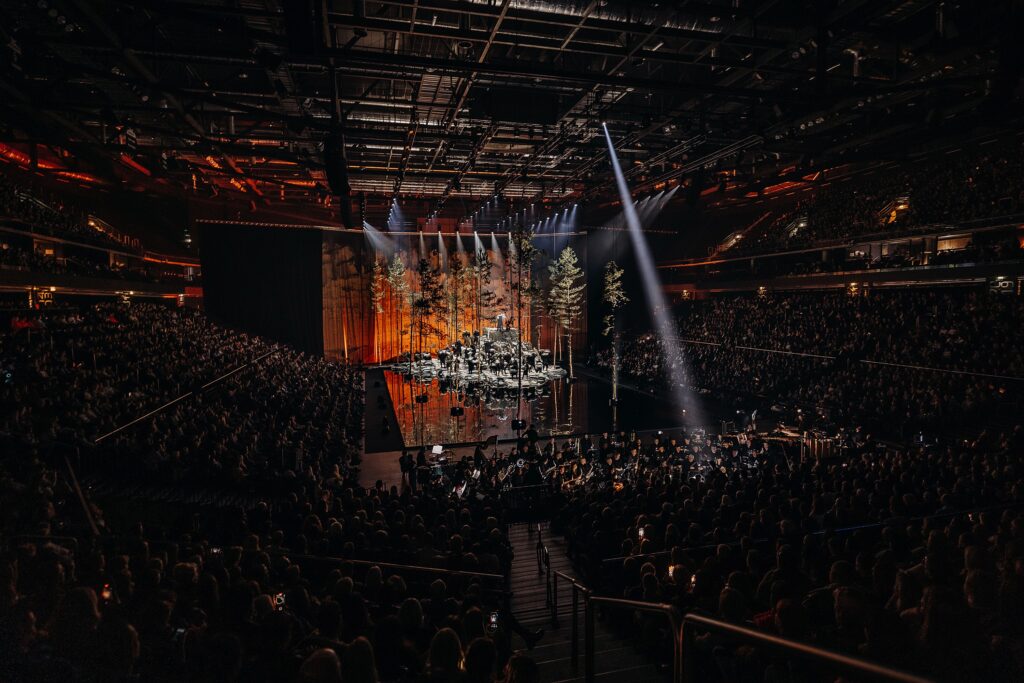
The results of the last official weekend of Kaunas as the European Capital of Culture can be counted in dozens, hundreds and thousands. The intersecting routes of events and happenings, the collecting of the stamps of the Kaunas Beast game and the sharing of promises to take care of yourself and the city, the handshakes and hugs, the shining eyes and the lights of the phones, the final chords of the “Contract” at Žalgirio Arena - Kaunas and Kaunas district were flooded with the hope that after a spectacular year-long programme, the positive, motivating and nurturing relationship with oneself and one’s environment, in which culture is the key element, will not vanish.
Europe’s focus on Kaunas
“Many think that culture is just for fun. However, it is the foundation of our society and soul, an integral part of life. I personally believe that the European Capitals of Culture tradition is one of Europe’s most successful programmes, creating a sustainable positive effect. Culture teaches, transforms, gives hope and perspective, inspires unity and solidarity,” Romanian President Klaus Iohannis said on Friday morning. Together with the leaders of Lithuania, Latvia and Poland, and Ukraine’s president Volodymyr Zelensky, who joined online, he opened the international symposium “The Idea of Europe”. The gathering of intellectuals - academics and practitioners - at Vytautas Magnus University was the most solid event of the “Contract” weekend. Its weight and depth of debate proved the importance of one of the continent’s smallest countries and the city that has this year been awarded the most important title in its life and has withstood global challenges with the title’s help.

Nurturing Sounds of Music
From the Lithuanian Youth Jazz Orchestra’s resounding debut concert and a bouquet of Yiddish songs at the Kaunas Artists’ House, the choral and experimental music event Deserts in the mysterious Kaunas Waters Reservoir, the tabalai experiment in the garden of the War Museum, the avant-garde electronic performances at the Daina cinema, and the nightclub Lizdas - music lovers were spoilt for choice throughout the European Capital of Culture’s extended finishing weekend. An impressive concert was also held in the Kaunas district - on Friday, Raudondvaris was turned into an open-air dance floor by the performer “Ten Walls”.
Of course, the most impressive sound fabric was created on Saturday evening at Žalgirio Arena - “Contract”, written by composer Zita Bružaitė for the occasion, was performed by singers Jeronimas Milius and Monika Pleškytė, Kaunas Big Band, Kaunas Wind Orchestra “Ąžuolynas”, Giunter Percussion and others, conducted by the talented Ričardas Šumila. The combined forces of dancers led by Petras Lisauskas, including Nuepiko, ULNA, and Šeiko Dance Company, as well as emerging talents, created magic for nearly 9,000 spectators.
The “Contract” was created by: author of the artistic concept and composer Zita Bružaitė, librettist Daiva Čepauskaitė, director Gediminas Šeduikis, set designer Sigita Šimkūnaitė, costume designer Sandra Straukaitė, choreographer Agnija Šeiko, head of the choir Danguolė Beinarytė, lighting designer Andrius Stasiulis, conductor Ričardas Šumila.
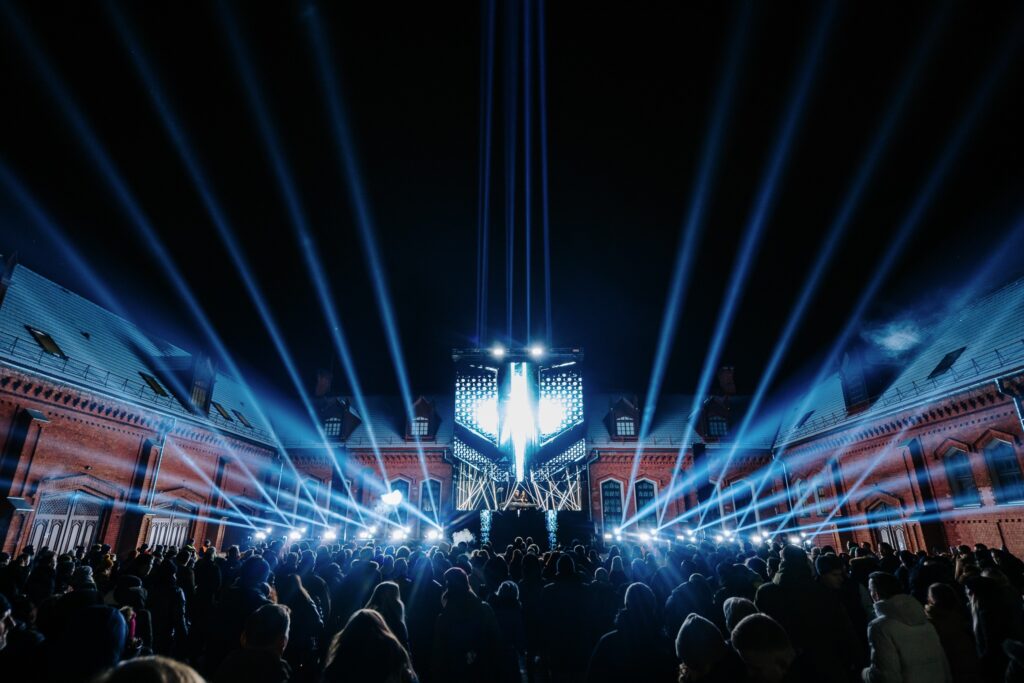
Opening and Closing of Exhibitions
The “Contract” weekend saw the opening of a bunch of exhibitions that will continue to welcome visitors. Ultrasocial Pos by the colourful Polish- Luxembourger Filip Markiewicz is open until New Year’s Day at the Meno Parkas gallery and, in the neighbourhood of the latter, the Kaunas Photography Gallery it’s a must to see an excerpt from The Family of Man, an exhibition presenting the origins of humanist photography that has travelled the world. The Lithuanian Artists’ Union gallery Drobė invited the spectators to look at the fake news from the artists’ point of view in the former textile factory in Šančiai. The photography exhibition “Hiding Places of the Mythical Beast”, which revealed the basements and dungeons of modernist buildings on Vienybės Square, promises to attract the attention of the curious throughout the festive period, most effectively after dark.
The attendance records were also broken by Yoko Ono’s exhibition “The Learning Garden of Freedom” at the Kaunas Picture Gallery, the contemporary art triennial UKRAINE! UNMUTED at Kaunas Central Post Office and William Kentridge’s “That Which We Do Not Remember” at the National M. K. Čiurlionis Art Museum. The international shows, all counting their last days, were explored by both individual guests and guided tours. Meanwhile, Kaunas Modern Art Foundation offered an exclusive itinerary to places important to artists who worked in the city.

Installations Dispelling the Darkness
The impressions of the “Contract” weekend, which were all over the social networks, were very often filled with art installations in both Kaunas and the Kaunas district. From the city centre, where many cultural institutions and other buildings came together for one spectacular light spectacle, to a narrow street in the Old Town, transformed into an artistic “Artery”; From the installation "Process" in Independence Square, which made everyone pause, to the stairs to the Mythical Beast’s lair, which appeared in the 1st Fort of Kaunas Fortress just for this weekend - all the artistic accents underlined that Kaunas is not only a beautiful city but also a city that wants to be happy in the future.
A contract with Oneself
The most important souvenir of “Kaunas 2022” a contract signed with oneself and the city - was taken home by almost 4000 participants of the closing weekend. Just as during the first two acts of the Kaunas trilogy, “Confusion” and “Confluence”, people followed rules and collected stamps provided by colourful characters waiting at the game stops.
Every city is beautiful. Every city is a city of love. Every city is like Kaunas and Kaunas is like every city. Every city has suffered in the past. Every city wants to be happy in the future. People we know are good people. People we don't know are good people. People we don't understand are good people. My freedom depends on the freedom of others. Kaunas is forever. These points in the „Contract“ reminded everyone to take care of themselves, others and the city.
The signing ceremony of the “Contract”, which was not only visually spectacular but also personally dedicated to each individual, took place hundreds of times in a wishing-washed underpass by the river Nemunas. And, of course, in the hearts and minds of everyone who has lived through Kaunas’ transformation “from temporary to contemporary”. After all, as the last clause of the “Contract” proclaims, Kaunas is forever.
